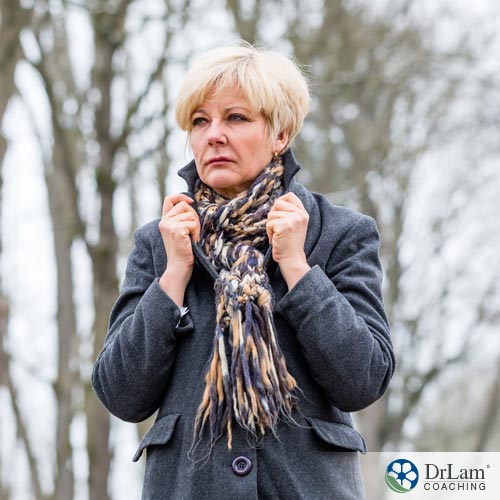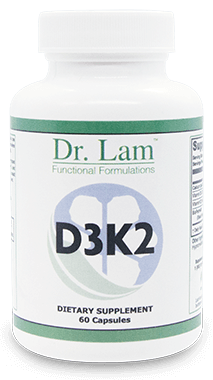 Millions of people suffer from seasonal affective disorder (SAD), experiencing depression for a prolonged period during a particular season, usually winter. It can seriously impact your life. However, there are steps you can take to properly manage the condition and alleviate the symptoms. If you understand the condition, you can apply the proper remedy to combat its effects.
Millions of people suffer from seasonal affective disorder (SAD), experiencing depression for a prolonged period during a particular season, usually winter. It can seriously impact your life. However, there are steps you can take to properly manage the condition and alleviate the symptoms. If you understand the condition, you can apply the proper remedy to combat its effects.
Seasonal affective disorder, also called SAD, is a type of depression triggered by a shift in seasons. Each year, around the same time, SAD sufferers experience depression that lasts until the end of the season. SAD is most common during the fall and winter seasons, but some sufferers experience depression in spring and summer.
SAD can be broken down into two main types.
With this type of SAD, the symptoms of depression are specific to the fall and winter seasons. It’s also referred to as winter depression. Symptoms may include sleeping issues (oversleeping), weight gain, changes in appetite (carbohydrate cravings), tired feelings, sadness, lack of energy, social withdrawal (“hibernating”), and thoughts about death or suicide.
With this type of SAD, the symptoms of depression are specific to the spring and summer seasons. It’s also referred to as summer depression. Symptoms may include sleep disruption (insomnia), weight loss, poor appetite, anxiety, agitation and irritability, and episodes of violent behavior.
The most significant and persistent symptom of SAD that sufferers experience is depression that lingers all day and, in most instances, every day.
The exact cause of SAD is unclear. However, doctors believe that certain factors contribute to the illness. Three key factors include:
When you don’t get enough sunlight, your body will experience a reduction in serotonin levels. Serotonin is a brain chemical (neurotransmitter) that plays a key role in mood regulation, helping to keep you in a good mood. However, when serotonin levels drop, it has the potential to trigger an imbalance in the brain chemical. When this disruption happens, the feelings of happiness can be replaced with depression. Winter is a time when you have less sunlight, and this is the time of year when serotonin levels tend to fall. Reduced exposure to sunlight could be a factor in fall and winter seasonal affective disorder.
Seasonal changes can disrupt the balance of melatonin in the body. Melatonin is a hormone that is produced by the pineal gland in the brain, and it is responsible for managing your sleep-wake cycle, which can impact your mood. This hormone is produced during the night, and if there’s a lack of sunlight during the day, this could stimulate an overproduction of melatonin. This can happen during the fall and winter seasons and has the potential to disrupt your sleep cycle. As such, you may experience symptoms such as sleepiness and a sluggish feeling if your melatonin levels are too high.
Your natural biological clock may become disrupted during fall and winter when there is less sunlight. This could trigger fall and winter seasonal affective disorder by impacting your mood, sleep, and the hormones that it regulates. The shift in your biological clock can cause you to become depressed and factor into fall and winter SAD.
 Some of the risk factors for seasonal affective disorder that have been observed include:
Some of the risk factors for seasonal affective disorder that have been observed include:
Of the U.S. population, roughly 5% of adults experience SAD. Still, many persons may be unaware that they have SAD.
It’s a condition that more women suffer from than men, though researchers aren’t sure why. In addition, more young adults (typically between 18 and 30 years old) are affected than older individuals. It tends to start in young adulthood.
Also, according to the NIMH, SAD is more common in people with bipolar II disorder, a hyperactivity disorder, an anxiety disorder, an eating disorder, or a panic disorder.
You should never ignore the signs and symptoms of SAD. If left untreated, the symptoms of the condition can worsen. Some complications that could result include:
Your doctor or a mental health specialist can help to whether your symptoms could be related to SAD. While there is no specific blood test to assess the condition, if your symptoms mimic other conditions, your doctor may recommend testing to rule them out as the cause. In addition, your healthcare provider may have you fill out questionnaires to confirm if the symptoms that you’re experiencing fit the criteria for SAD.
According to the Cleveland Clinic, persons must meet the following criteria to be diagnosed with SAD:
As established earlier, seasonal affective disorder appears to be linked to the human biological clock and disruptions in the natural rhythm that the sleep cycle follows. A disturbance in your sleep cycle as a result of changes in sunlight levels or prolonged stress can lead to insomnia, metabolic disorders, and mood disorders. AFS is one of the disorders that can disrupt your sleep cycle.
AFS is a neuroendocrine disorder that is caused by chronic stress that activates the Cardionomic circuit. This circuit houses the adrenal glands, the autonomic nervous system (ANS), and the cardiovascular system (CVS). AFS causes fatigue and puts excess stress on the body and the different systems.
The NeuroEndoMetabolic (NEM) Stress Response, helps to combat periods of stress. However, when the stress is prolonged, the systems malfunction and the adrenal glands become compromised and fail to work efficiently. Consequently, symptoms such as anxiety, lethargy, and mood swings may result. As such, AFS may lead to SAD or cause worsening symptoms.
Managing seasonal affective disorder takes on different forms depending on your symptoms. It can include a combination of light therapy, medications, and psychotherapy.
 Light therapy is essential for dealing with seasonal affective disorder. Sunlight provides the body with vitamin D that can help to boost your mood, and it provides light in a range of spectrums that can properly regulate your body’s circadian rhythms. Also, sunlight can help to positively impact the Neuroaffect circuit of NEM stress response by helping to normalize sleeping patterns.
Light therapy is essential for dealing with seasonal affective disorder. Sunlight provides the body with vitamin D that can help to boost your mood, and it provides light in a range of spectrums that can properly regulate your body’s circadian rhythms. Also, sunlight can help to positively impact the Neuroaffect circuit of NEM stress response by helping to normalize sleeping patterns.
Cognitive behavioral therapy (CBT) is a form of talk therapy that is used to help people learn to cope with challenges in their lives. CBT can be effectively applied to people with SAD. This type of therapy, referred to as CBT-SAD, is usually carried out in weekly group sessions that last for 6 weeks. It emphasizes the replacement of negative thoughts connected to the winter season with more positive thoughts.
Another aspect of CBT-SAD that is helpful is the use of behavioral activation to assist persons in finding and scheduling fun and engaging indoor or outdoor activities that they would otherwise not have partaken in during the winter.
Seasonal affective disorder is a type of depression linked to disturbances in serotonin activity, and antidepressant medications known as selective serotonin reuptake inhibitors (SSRIs) are used to ameliorate symptoms of SAD and enhance mood. Some popular SSRIs include citalopram, escitalopram, fluoxetine, paroxetine, and sertraline.
Also, the U.S. Food and Drug Administration (FDA) approved antidepressant bupropion can help to prevent the recurrence of seasonal major depressive episodes if taken as directed from the fall until early spring. Be sure to consult with your doctor if you have concerns regarding the risk of any medication taken for remedying SAD. Some of these medications can have side effects.
Some lifestyle changes can help to effectively keep SAD at bay.
 Vitamin supplementation may help to regulate biochemical pathways and assist with proper cognitive functioning, which is excellent when dealing with mental disorders. Supplements can also be beneficial in remedying nutritional imbalances that can influence depression. They can help reduce symptoms and alleviate seasonal fluctuations in mood in SAD sufferers. Some supplements that have a positive impact on SAD include:
Vitamin supplementation may help to regulate biochemical pathways and assist with proper cognitive functioning, which is excellent when dealing with mental disorders. Supplements can also be beneficial in remedying nutritional imbalances that can influence depression. They can help reduce symptoms and alleviate seasonal fluctuations in mood in SAD sufferers. Some supplements that have a positive impact on SAD include:
Seasonal affective disorder can have you feeling down for a prolonged period of time. This can impact your work life, social life, and your mental well-being. If you have a history of suffering from depressive feelings and thoughts during the winter or summer season, speak to your doctor. Get a proper assessment at your healthcare provider’s office if you are unsure if you have SAD.
If you are concerned about depression and would like assistance in determining natural ways to keep it at bay or remedy symptoms, the team at Dr. Lam Coaching can help. We offer a free** no-obligation phone consultation at +1 (626) 571-1234 where we will privately discuss your symptoms and various options. You can also send us a question through our Ask The Doctor system by clicking here.

D5000 Plus: Radiate Wellness with the Sunshine Vitamin.
The onset of seasonal affective disorder occurs during a particular season and lasts all season long. A drop in serotonin levels, an imbalance of melatonin, and a disruption of the body’s biological clock are contributing factors to the condition. It can be managed with light therapy, lifestyle changes, medications, psychotherapy, and supplements.